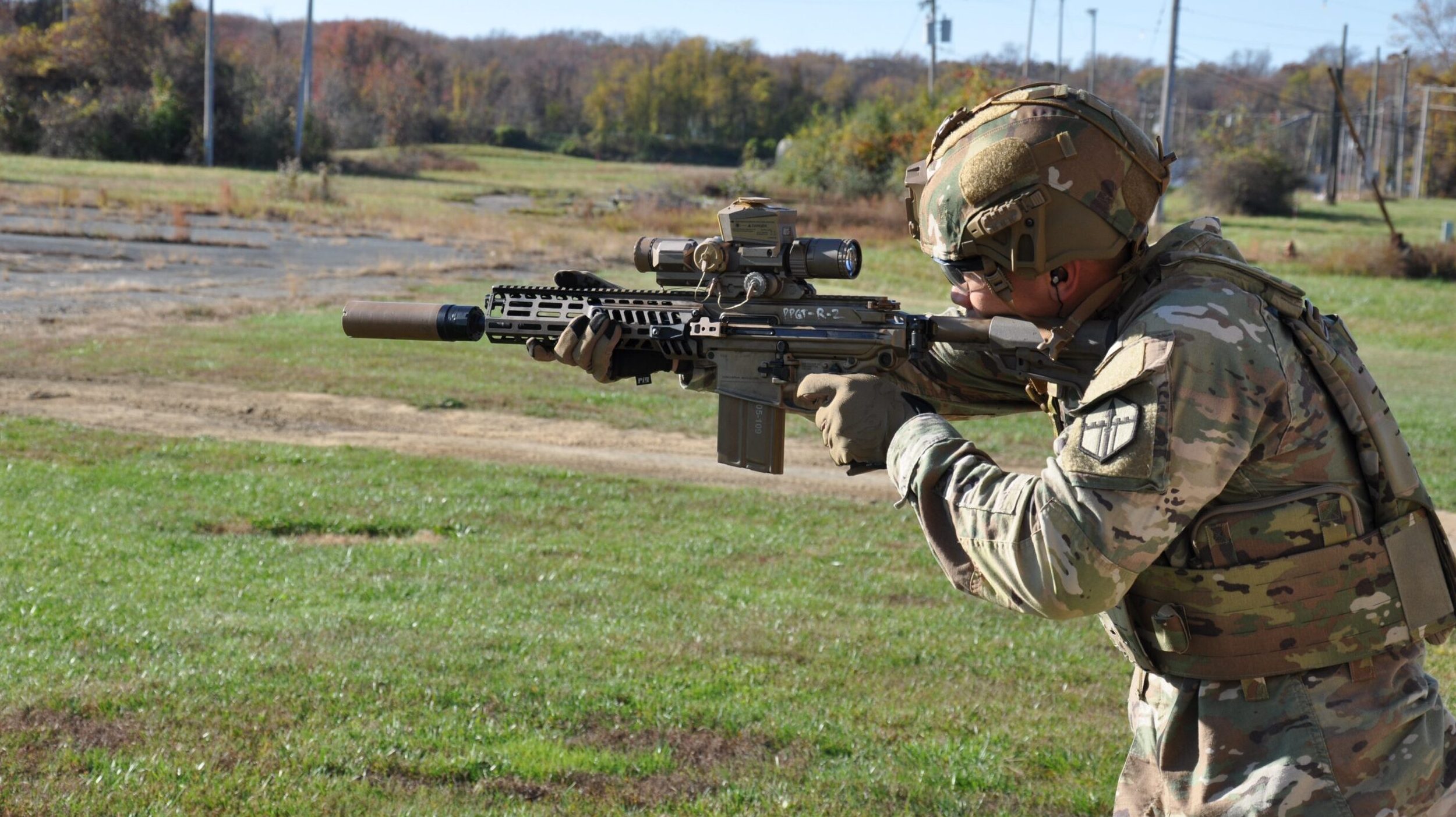
WASHINGTON — Recent Army tests of new Next Generation Squad Weapon prototypes show marked improvements in fume and accuracy problems that contributed to a fielding delay, according to the service’s top acquisition official.
When the service awarded Sig Sauer with a coveted NGSW contract in April 2022 to produce the new XM7 rifle, XM250 automatic rifle and the common 6.8mm cartridge, it envisioned soldiers would begin receiving the new arms in fiscal 2023 which ends next week. However, early developmental testing unearthed “small issues” with “accuracy and fumes” when rounds were fired from those guns, according to the head of Army acquisition Doug Bush.
Unspecified improvements have now been made, and the service recently conducted production qualification testing with both the XM7 poised to replace the M4/M4A1 carbine rifle, and the XM250 which is replacing the M249 squad automatic weapon.
“Early returns, again, [are] very positive that our partner Sig Sauer can make the weapons and address some of the small issues,” Bush told reporters at the Pentagon Tuesday.
“We saw great progress on all the challenging areas,” he later added. “So, [we’re] not declaring victory there but a really good sign of progress.”
Sig Sauer did not immediately respond to an emailed request for details, and the Army’s Program Executive Office Soldier, tasked with NGSW oversight, has not responded to questions about the delay or if it has made additional changes to its fielding timetable.

The questions that warfighters ask the most are now answered with data analytics
CDAO’s Advana data analytics platform is ingesting data from about 500 DoD business systems.
However, in an April press release, PEO Solider explained that the service and company spent the fall of 2022 conducting numerous technical tests and a soldier touch point with the NGSW prototypes. Direct soldier feedback provided the duo with “simple design changes” to make before nailing down a production-ready design, Capt. Tyler Morgan, the NGSW assistant product manager, said in the release.
Now that production qualification testing is complete, the service explained in April that an operational test would be next, and if deemed successful, it would shoot to hit that first unit equipment milestone in the second quarter FY24, which is in the January-March 2024 window.
It is not clear if that timetable remains intact, but Bush reasserted that “absent a new challenge emerging” the rapid fielding program is headed in the right direction with plans to break ground later this year at the Lake City Army Ammunition Plant for a facility to initially produce those 6.8mm cartridges.
“This weapon is a… fundamental leap of capability for infantry forces to engage enemy units… with this rifle compared to what they have now,” he added. “So, this would be a big deal for the infantry community.”